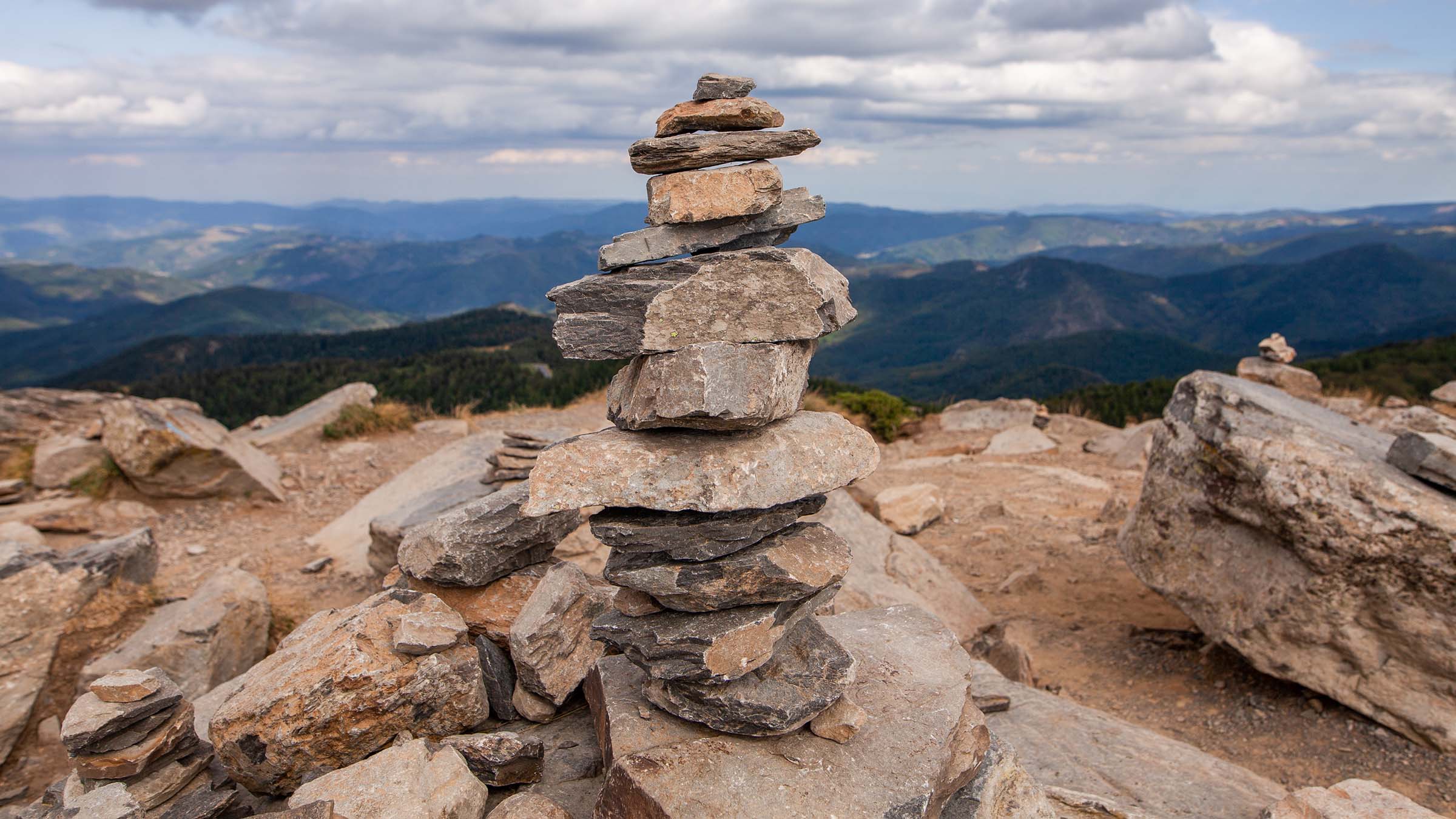Down With Cairns

(Photo: Capelle.r / Moment via Getty)
I hate ducks. Not our gentle, feathered brethren, but the rock piles left all over the backcountry by well-meaning Samaritans who want to show other hikers the way.
Dear cairn-builders, I appreciate your thoughtfulness, but I don’t want someone showing me where to go. Part of the fun of routefinding is finding the route; I’m out there to test my own navigation skills. And, frankly, it seems I’m often better at it than you: If I’m momentarily off my intended track and searching for it, one of your little markers, I’ve learned, may not lead me to salvation at all, but further into trouble, having been placed by a wandering soul who was even more disoriented than I.
Cairns are an eyesore, a manmade addition to an otherwise pristine place, a little monument that says, “Kilroy was here.” (And for that reason they are illegal on public land. Federal wilderness regulations state that “constructing, placing, or maintaining any kind of . . . structure . . . or other improvement on National Forest System lands” is prohibited.) All hikers make a vow at the ranger station when they receive their backcountry permit to leave no trace—why do little stone monuments suddenly not count?
I am not entirely merciless. If the route is downright dangerous, I can be swayed to the utility of a duck. As evidence, I cite my recent hike in the southern Sierra. I had descended the Elizabeth Pass Trail in Sequoia National Park and arrived at a spot where the path plunged into the raging Kaweah River. I could see the trail emerge on the far bank, but between it and me were roiling, whitewater rapids. Crossing here was certain death. I looked around and noticed a small pile of stones on the near shore. Another one was stacked 10 yards upstream, then another, and another. Before long, I found a safe crossing, just five ducks away.
Accepting this kind of cairn-building exception makes me downright tolerant compared to hardliners. In 1976, when Steve Roper wrote his definitive The Climber’s Guide to the High Sierra, he exhorted readers to not only refrain from building cairns, but to knock down every one they encountered.
Let’s not turn our favorite places into protracted games of duck-duck-goose. Leave rocks where they lie—and hikers to their own devices.